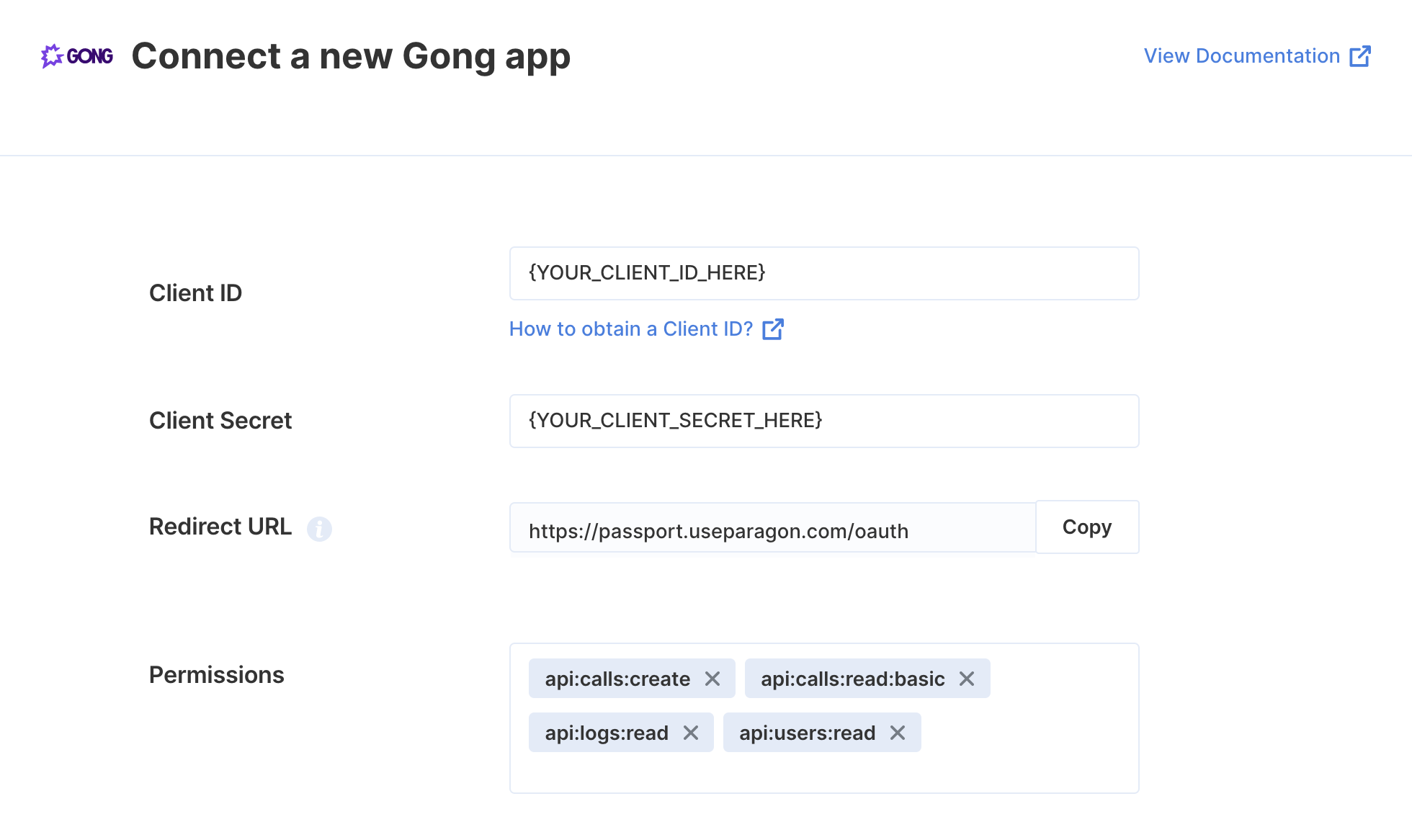Setup Guide
Note: You’ll need to create a new Gong app if you don’t already have one.
- Client ID
- Client Secret
- Scopes Requested
Add the Redirect URL to your Calendly app
Paragon provides a redirect URL to send information to your Calendly app. To add the redirect URL to your Calendly app:- Copy the link under “Redirect URL” in your integration settings in Paragon. The Redirect URL is:
- Log into your Gong Developer Portal.
- Select your app from the list of apps.
- Under Redirect URL, paste-in the redirect URL from Paragon. The redirect URL can be found in Step 1.
-
Press the
Savebutton to confirm your changes.
Add your Gong app to Paragon
Under Integrations > Connected Integrations > Gong > App Configuration > Configure, fill out your credentials from your developer app in their respective sections:- Client ID: Found under Client ID on your Gong App page.
- Client Secret: Found under Client Secret on your Gong App page.
- Permissions: Select the scopes you’ve requested for your application. For a list of recommended scopes, please view this integration within your Paragon dashboard. View dashboard.
Leaving the Client ID and Client Secret blank will use Paragon development keys.

Connecting to Gong
Once your users have connected their Gong account, you can use the Paragon SDK to access the Gong API on behalf of connected users. See the Gong REST API documentation for their full API reference. Any Gong API endpoints can be accessed with the Paragon SDK as shown in this example.Building Gong workflows
Once your Gong account is connected, you can add steps to perform the following actions:- Add a New Call
- Get Call by ID
- Search for Call
{{ to invoke the variable menu.